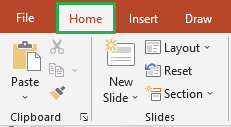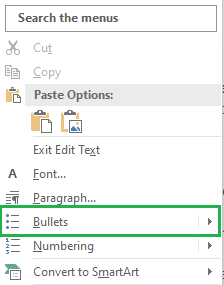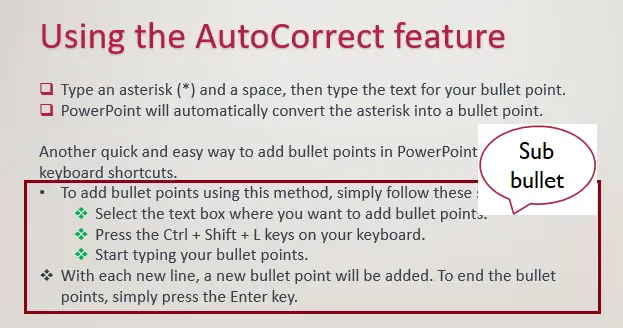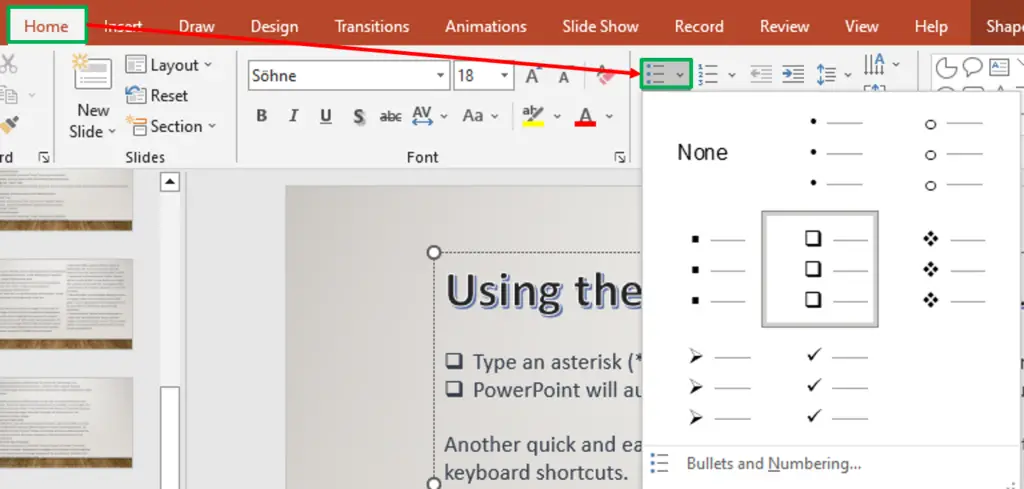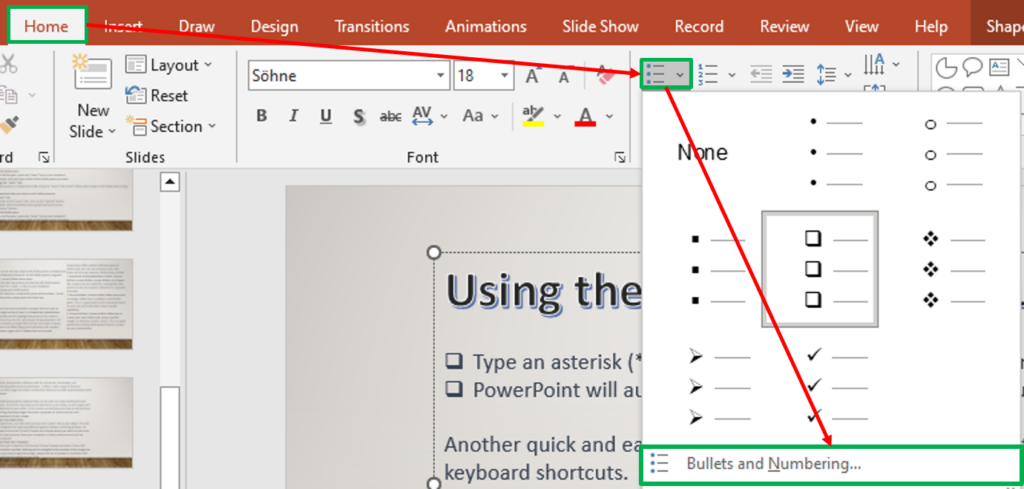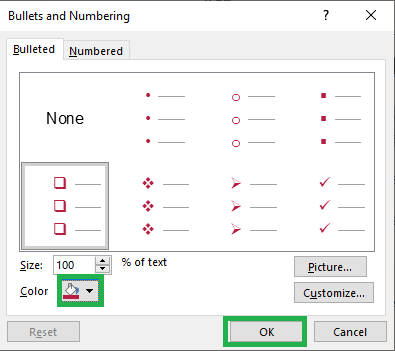Do you want to add bullets point to your PowerPoint Presentation so it’s easier to read?
Well, this article will show the ways on how to add bullet points in Powerpoint. Including changing of color and adding sub-bullets.
So, before knowing how to add bullets, let’s briefly define first what are…
What are PPT Bullets?
PPT Bullets are the small symbols or images that are used to format and organize lists or text in a PowerPoint presentation. Typically, they are used to highlight key points or to create a hierarchical structure for the information being presented.
PPT Bullets help to break up large blocks of text and make it easier for the audience to follow along and understand the content. There are various types of PPT Bullets that can be used such as:
| Illustrations | Descriptions |
 | Numbered bullets are used to create lists that are numbered sequentially. This is useful for creating step-by-step instructions or outlining a process. |
 | Alphabetic bullets are used to create lists that are labeled with letters, rather than numbers. This is useful for creating lists in which the order of items is not important. |
 | Square bullets are simply small square symbols used to format lists. They are a good choice for lists that don’t require numbering or labeling. |
 | Arrow bullets are shaped like arrows and are useful for creating lists that need to direct the viewer’s attention in a specific direction. |
 | Picture bullets allow you to use an image, rather than a symbol, as the bullet point. This is a great way to add a personal touch to your lists and make them more visually appealing. |
 | Custom bullets allow you to create your own bullet style using a symbol, image, or character of your choice. This is a great option for creating bullet points that are unique to your presentation. |
how to add bullet points in ppt
There are several ways how to quickly add bullet points in PowerPoint, so you can create effective presentations in no time. Follow the following method below:
- Using the Home Tab
One of the quickest and simplest ways to add bullet points to a PowerPoint slide is to use the Home tab.
Follow these steps to add bullet points using this method:
1. Open the PowerPoint slide where you want to add bullet points.
2. Head over to the Home tab.

3. Click on the “Bullets” button, located in the Paragraph section of the Home tab.
4. Type in your first bullet point.
5. To add another bullet point, press the “Enter” key on your keyboard.
6. Repeat the process until you have added all the bullet points you want. - Using Keyboard Shortcuts
Another quick and easy way to add bullet points in PowerPoint is to use keyboard shortcuts.
To add bullet points using this method, simply follow these steps:
1. Select the text box where you want to add bullet points.
2. Press the Ctrl + Shift + L keys on your keyboard.
3. Start typing your bullet points.
With each new line, a new bullet point will be added. To end the bullet points, simply press the Enter key. - Using the Right-Click Menu
You can also add bullet points to a PowerPoint slide using the right-click menu. Follow these steps to add bullet points using this method:
1. Open the PowerPoint slide where you want to add bullet points.
2. Place your cursor where you want the first bullet point to appear.
3. Right-click your mouse.
4. From the right-click menu, select “Bullets“.
5. Type in your first bullet point.
6. To add another bullet point, press the “Enter” key on your keyboard.
7. Repeat the process until you have added all the bullet points you want. - Using the AutoCorrect feature
You can add bullet points to a PowerPoint slide using the AutoCorrect feature as well. Follow these steps to add bullet points using this method:
1. Type an asterisk (*) and a space, then type the text for your bullet point.
2. After you Press Enter, PowerPoint will automatically convert the asterisk into a bullet point.
how to add sub bullets in ppt
Adding Sub bullets is simply pressing the Tab key on your keyboard. Afterward, you will see PowerPoint will add an indented level where you can add another topic.
Usually, this is used to create supporting points that connect to a higher-level point with this.
how to change bullets color in ppt
This time you may want to change the appearance of the bullet list you have such as changing the color and its size. So the following steps below will help you in any possible way.
Step 1. Select your existing bulleted list.
Step 2. Head over to the Home tab, then click the Bullets drop-down arrow.
Step 3. From the drop-down menu that appears, select Bullets and Numbering.
Step 4. Then a dialog box will appear. And set the bullet size in the Size field.
Step 5. In the Color drop-down box click it and select a color.
Step 6. Finally, click OK. The bullet size and color should update the changes you make.
What is the shortcut for bullet points in PowerPoint?
You can use a keyboard shortcut to create a bulleted list or a numbered list.
- To add a bulleted list, just type * (asterisk), and then press Spacebar or the Tab key.
- To make a numbered list, just type 1 and then press Spacebar or the Tab key.
Conclusion
In conclusion, adding bullet points to PowerPoint can enhance the visual appeal of your presentation and make it more engaging and interactive.
If you like these types of tutorials, we also have how to add numbering and bullets in MS Word.
Anyway, for more educational articles like this feel free to visit our website. Thank you for reading 🙂


